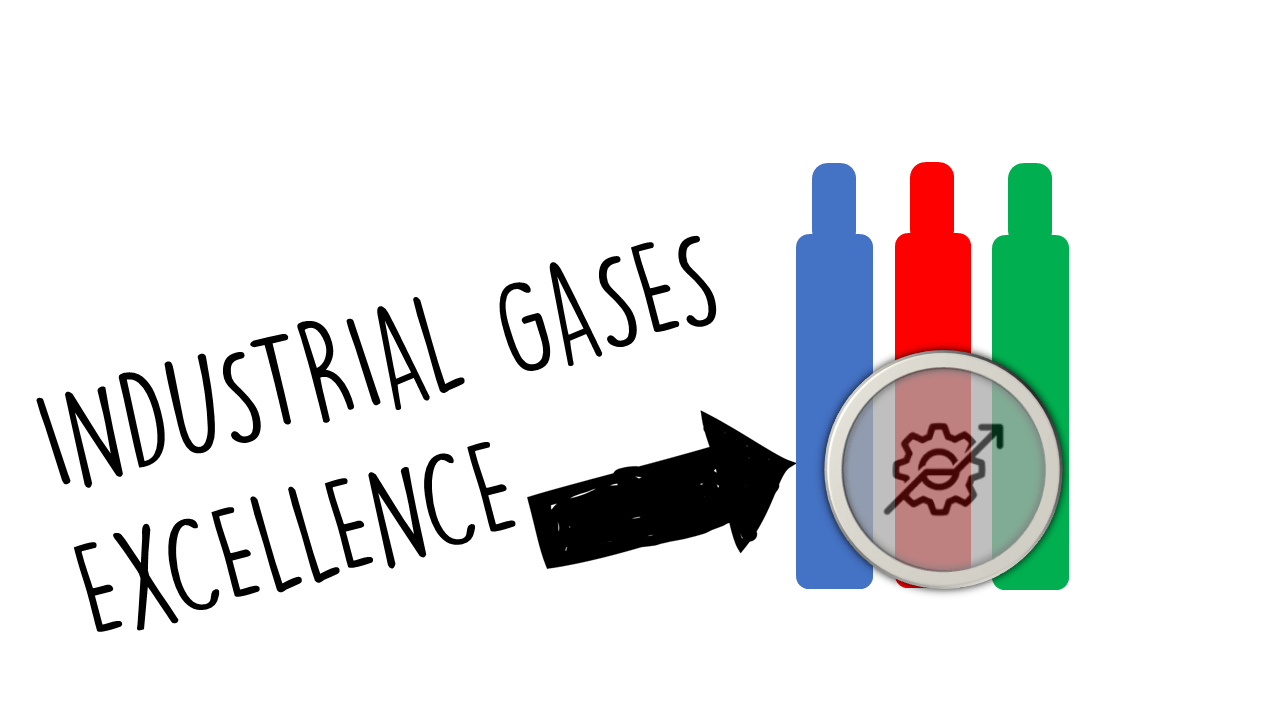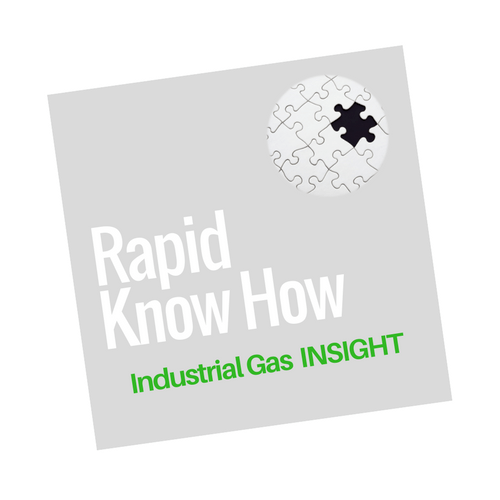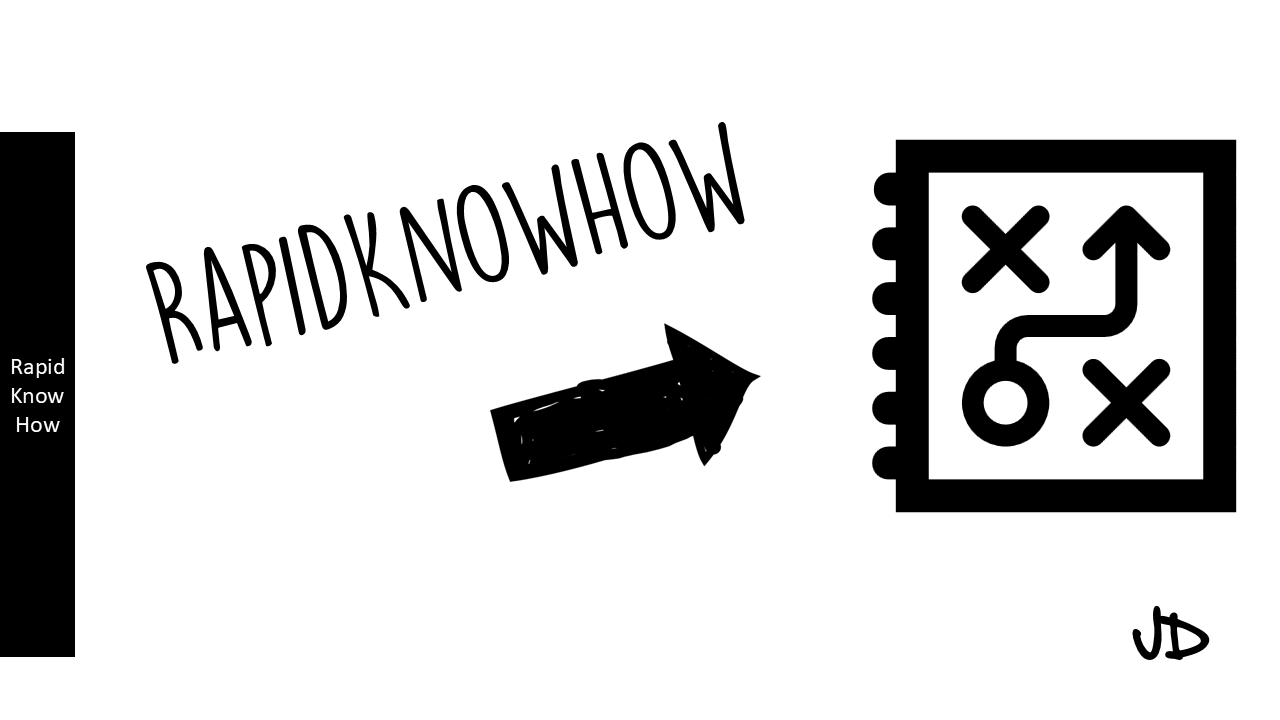The RapidKnowHow Process : Market Space Creator
Industrial Gas Leader > Market Space Creator > Designing a New Market Space > Sector: Industrial Gases > Framing > ReFraming > New Industrial Gas Market Space > Overview > Landscape > Competitive Advantage > Strategic Actions > Case Studies > Conclusion > Get Started in 3 Steps
Creating a new market space in the industrial gases sector involves several crucial steps. Below is an outline that captures the essence of each aspect mentioned, allowing a structured approach to designing and redefining the market landscape for industrial gases.
Overview
The industrial gas market is integral to various industries including healthcare, manufacturing, and energy. This market has a potential for innovation and new applications that can redefine competitive advantage.
Landscape
Analyze the current market landscape by looking at:
- Market Trends: Sustainability, digitalization, and decarbonization.
- Regulatory Environment: Regulations that affect production, transportation, and usage of industrial gases.
- Customer Needs: Increasing demand for efficiency, safety, and environmentally friendly options.
Competitive Advantage
To gain a competitive advantage in the new market space:
- Innovation: Invest in R&D for new gas formulations and advanced production technologies.
- Customer-Centric Approach: Understand and anticipate customer requirements, offering tailored solutions.
- Strategic Partnerships: Collaborate with technology firms and research institutions to foster innovation.
Strategic Actions
- Market Research: Conduct thorough research to identify gaps in the current offerings and emerging needs.
- Technology Investment: Explore investments in new technologies such as cryogenics or gas separation technologies.
- Sustainability Initiatives: Implement eco-friendly practices and products, such as carbon capture solutions.
Case Studies
- Case Study1: An example of a company that successfully introduced a new gas product that met a rising market demand.
- Case Study 2: A firm that used digital solutions (IoT, data analytics) to enhance operational efficiency and customer service.
- Case Study 3: A partnership between an industrial gas supplier and a technology company that led to innovative applications in healthcare gas delivery.
Conclusion
The industrial gas sector is ripe for disruption and innovation. By reshaping the market space, companies can achieve a formidable competitive edge and meet the evolving demands of various industries.
Get Started in 3 Steps
- Identify Opportunities: Conduct market analysis to discover unfulfilled needs and areas for innovation.
- Develop a Strategic Plan: Create a roadmap for market entry that includes technological advancements, partnerships, and sustainable practices.
- Engage Stakeholders: Collaborate with clients, industry experts, and regulatory bodies to ensure alignment with market needs and regulations.
By following these outlines, organizations can effectively reframe the industrial gas market space, focusing on innovation, sustainability, and customer-centric strategies.
ReFraming the Industrial Gas Market Space
Introduction
Reframing the industrial gas market space involves looking beyond traditional paradigms to identify new opportunities, address emerging challenges, and innovate for the future. With advancements in technology, changing regulations, and evolving customer demands, it’s essential for industry leaders to redefine their approach.
1. Market Assessment
- Current Landscape: Evaluate the existing market dynamics—major players, market shares, customer segments, and distribution channels.
- Trends: Analyze trends such as digital transformation, sustainability, and increasing energy efficiency, as well as shifts in industrial processes.
2. Challenges and Opportunities
- Supply Chain Resilience: The COVID-19 pandemic highlighted vulnerabilities in supply chains. Developing more resilient and diversified supply networks can provide a competitive advantage.
- Sustainability Imperatives: Addressing the global shift to lower carbon emissions is crucial. Opportunities exist in developing green gases and alternative energy sources.
- Technological Advancements: Embrace artificial intelligence, IoT, and automation to enhance production, distribution, and customer engagement.
3. Customer-Centric Focus
- Understanding Customer Needs: Conduct in-depth research to understand what customers value. Focus on safety, reliability, and flexibility in service offerings.
- Custom Solutions: Offer bespoke services and products tailored to specific industry needs, such as healthcare, electronics, and food and beverage.
4. Innovation and R&D
- New Products and Services: Invest in R&D to develop innovative gas products, including high-purity gases for specialized applications.
- Cross-Industry Collaboration: Partner with industries like automotive and aerospace to create tailored gas solutions that enhance performance and sustainability.
5. Sustainability and Corporate Responsibility
- Green Initiatives: Focus on producing and promoting low-carbon and renewable gases, such as hydrogen and biogas.
- Life Cycle Analysis: Implement life cycle assessments to understand the environmental impact of gas production and usage.
6. Digital Transformation
- Smart Solutions: Leverage IoT and data analytics to monitor usage, predict demand, and optimize supply chains.
- Enhanced Customer Interaction: Use digital platforms for direct customer engagement, offering real-time tracking and AI-driven support services.
7. Strategic Positioning
- Differentiation Strategies: Position the company as a leader in sustainability, innovation or customer service.
- Brand Reputation: Establishing a strong, reputable brand that aligns with sustainability and technological advancement will attract environmentally conscious customers.
8. Regulatory Compliance and Advocacy
- Navigating Regulations: Stay ahead of regulatory changes by actively participating in industry groups and contributing to policy discussions.
- Advocacy for Sustainable Practices: Engage with policymakers to advocate for regulations that support sustainable industrial gas production and usage.
9. Future Outlook
- Market Predictions: Forecast future trends in industrial gas demand based on emerging technologies and changing industrial processes.
- Adaptation and Agility: Develop a business model that allows for rapid adaptation to changes in technology, customer demands, and regulatory environments.
Conclusion
Reframing the industrial gas market space requires a comprehensive approach that embraces innovation, sustainability, and customer-centric strategies. By continuously evaluating the market landscape, understanding emerging trends, and responding proactively to challenges, industry leaders can position themselves at the forefront of this critical sector. The focus on collaboration, innovation, and sustainability will not only enhance competitiveness but also contribute to a more sustainable future.
Industrial Gas Leader: Case Studies in New Market Space
Introduction
As the industrial gas sector evolves, leading companies are identifying and exploring new market spaces to enhance their competitiveness and address the changing demands of industries. This report presents a selection of case studies highlighting successful strategies and innovations undertaken by industrial gas leaders to carve out new market spaces.
Case Study 1: Air Products – Hydrogen for Transportation
Background
Air Products has traditionally dominated the supply of industrial gases such as oxygen, nitrogen, and hydrogen. With the increasing focus on sustainability and clean energy, the company recognized the potential of hydrogen in the transportation sector.
Strategy
- Investment in Hydrogen Infrastructure: Air Products invested heavily in developing a hydrogen transportation infrastructure, including refueling stations for fuel cell vehicles.
- Partnerships: Collaborated with automotive manufacturers, governments, and energy companies to promote hydrogen fuel cell technology.
- Creating Value Chains: Developed a complete hydrogen value chain—from production to distribution—which enabled them to support various transportation sectors.
Outcomes
- Market Leadership: Established itself as a leader in the hydrogen economy and positioned its refueling networks in strategic locations.
- Sustainability Goals: Contributed to reducing greenhouse gas emissions in transportation.
- Diversified Revenue Streams: Expanded business beyond traditional industrial gases into the emerging hydrogen market.
Case Study 2: Linde – Eco-Friendly Gases
Background
Linde, a global leader in industrial gases, recognized the increasing customer demand for sustainable products and services, particularly in sectors like food processing and healthcare.
Strategy
- Green CO2 Production: Launched a program to capture CO2 emissions from fermentation processes to be used in food and beverage applications.
- Sustainable Gas Applications: Developed and marketed eco-friendly gases for applications such as laser cutting, welding, and food preservation.
- Sustainability Certifications: Achieved certifications for environmental management and sustainability practices to enhance brand trust.
Outcomes
- Increased Market Penetration: Gained significant market share in sustainable products, particularly in Europe.
- Customer Loyalty: Attracted customers who prioritize eco-friendly practices and reinforced relationships with existing clients.
- Enhanced Corporate Image: Positioned Linde as a thought leader in sustainability within the industrial gas sector.
Case Study3: Air Liquide – Digital Transformation and Smart Solutions
Background
Air Liquide aimed to digitally transform its service delivery to enhance operational efficiency and customer engagement.
Strategy
- IoT and Data Analytics: Implemented IoT solutions for real-time monitoring of gas usage, prediction of maintenance needs, and optimization of delivery schedules.
- Smart Management Systems: Launched Air Liquide’s ‘Connected Services’ platform that provides customers with insights and analyses to manage their gas consumption better.
- AI-Driven Customer Support: Integrated AI in customer service to provide automated responses and predictive maintenance, improving response time.
Outcomes
- Operational Efficiency: Reduced operational costs and wastage through optimized delivery and proactive maintenance.
- Enhanced Customer Experience: Improved customer satisfaction through real-time data and insights.
- Leadership in Innovation: Positioned Air Liquide at the forefront of digital innovation in the industrial gas sector.
Case Study4: Messer – Geographic Expansion in Emerging Markets
Background
Messer Group, a prominent industrial gas manufacturer, saw significant growth opportunities in emerging markets, particularly in Asia and Africa.
Strategy
- Targeted Investments: Focused on strategic investments in production plants and distribution networks in high-growth regions.
- Local Partnerships: Formed joint ventures and partnerships with local enterprises to leverage regional knowledge and operational expertise.
- Customized Solutions: Developed tailored gas solutions suited to local industries such as food preservation, healthcare, and manufacturing.
Outcomes
- Significant Revenue Growth: Experienced double-digit growth in emerging markets over several years.
- Market Positioning: Successfully positioned Messer as a key player in newly emerging industrial gas markets.
- Tailored Offerings: Enhanced customer loyalty by providing localized services and support.
Conclusion
These case studies illustrate how industrial gas leaders are successfully reframing their business strategies and exploring new market spaces through innovation, sustainability, and customer-centric approaches.
By embracing new technologies, engaging in strategic partnerships, and responding to emerging market demands, these companies not only enhance their competitiveness but also contribute to a more sustainable and efficient industrial gas sector.
The future of industrial gases lies in adaptability and foresight, as companies navigate a rapidly changing landscape.
Industrial Gas Leader: SIAD as Market Space Creator
Introduction
SIAD, a prominent player in the industrial gas industry, has demonstrated exceptional capability as a market space creator. This report explores how SIAD develops new markets, innovates its product offerings, and adapts to changing industry dynamics.
By leveraging its strengths and pushing boundaries in technology and customer engagement, SIAD has positioned itself as a leader in the industrial gas sector.
Company Overview
Founded in 1927 and headquartered in Bergamo Italy, SIAD operates globally, providing industrial gases, medical gases, and related services. The company is dedicated to innovation, sustainability, and meeting customer needs across various sectors, including healthcare, manufacturing, food processing, and energy.
Market Space Creation Strategies
1. Innovation in Product Offerings
Strategy
SIAD has focused on developing unique gas blends and delivery systems tailored to specific industry needs. This includes:
- Customized Gas Mixtures: Offering specialty gases for laboratories, pharmaceuticals, and electronics, allowing clients to operate more efficiently in their unique applications.
- Advanced Medical Gases: Innovating solutions for hospitals and medical facilities, including gas management systems that enhance patient safety and operational efficiency.
Outcomes
- Industry Differentiation: By providing tailored solutions that address specific customer challenges, SIAD has distinguished itself from competitors.
- Increased Market Share: Gained significant traction in niche markets, particularly in healthcare and technology.
2. Sustainable Practices and Green Solutions
Strategy
Recognizing the industry’s shift toward sustainability, SIAD has aggressively pursued eco-friendly initiatives:
- Carbon Capture and Utilization (CCU): Developing technologies to capture CO2 emissions and convert them into useful products.
- Hydrogen Economy: Investing in hydrogen production and delivery, supporting clients transitioning to cleaner energy sources.
Outcomes
- Enhanced Reputation: Established itself as a leader in sustainability within the industrial gas sector.
- New Business Opportunities: Created new revenue streams in renewable energy and sustainable process management.
3. Geographic Expansion and Market Penetration
Strategy
SIAD expanded its footprint through strategic investments and partnerships in high-growth emerging markets:
- Local Manufacturing Facilities: Set up production plants in regions with rising industrial demands to improve delivery times and reduce costs.
- Collaborative Partnerships: Formed alliances with local enterprises to leverage regional expertise and accelerate market entry.
Outcomes
- Growth in Emerging Markets: Achieved robust growth in regions such as Asia, Africa, and South America, where demand for industrial gases is increasing.
- Resilience Against Economic Fluctuations: By diversifying geographically, SIAD mitigated risks associated with market volatility in established regions.
4. Digital Transformation and Customer Engagement
Strategy
SIAD has embraced digital technologies to enhance customer interactions and operational efficiency:
- Smart Gas Solutions: Developed IoT-enabled solutions for real-time monitoring of gas usage and automated ordering systems.
- Data Analytics: Leveraged data analytics to provide insights into customer trends and optimize supply chain processes.
Outcomes
- Improved Customer Experience: Enhanced satisfaction through personalized services and proactive communications.
- Operational Efficiency: Reduced costs and waste by optimizing logistics and supply chain management.
Conclusion
Through innovation, sustainable practices, strategic expansion, and digital transformation,
SIAD has effectively created and shaped new markets in the industrial gas sector. By staying ahead of industry trends and prioritizing customer needs,
SIAD not only solidifies its position as a market leader but also contributes to the evolution of the industrial gas landscape.
The company’s commitment to adaptation and growth will ensure its continued relevance and leadership in the evolving market space.





